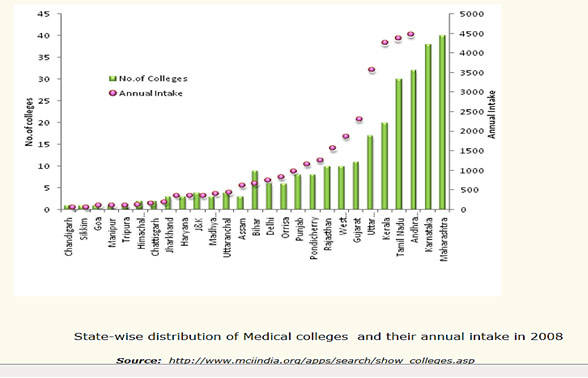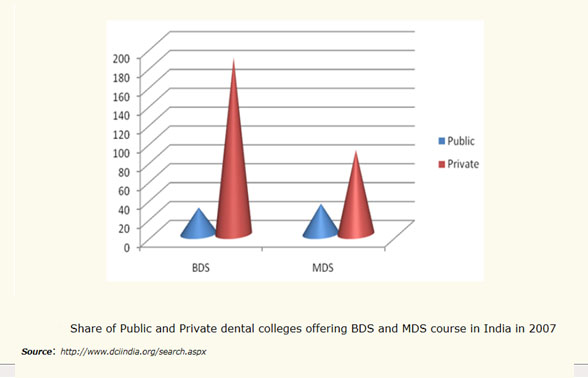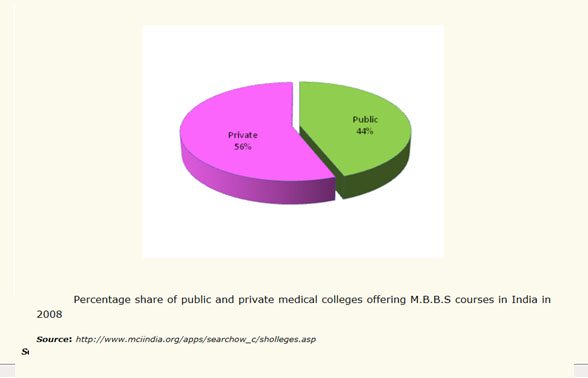As per ministry of health, there is a shortage of approximately half a million doctors, a million nurses and the deficit need to be filled in the next five years. Such shortage will lead to exponential salary hike demands, and further lead to high patient care costs.
At present, the number of registered allopathic doctors in the country is 5.5 lakhs resulting in a doctor/patient ratio being 0.6/1000. In comparison, China has 1.4 doctors per 1000. While India has an unmet demand of 6lakhs doctors, UK has 40,000 Indian doctors and USA has 50,000 Indian doctors (1 for every 20 practicing doctors).
The total number of beds available in 11,614 government hospitals is 5,40,330
There are 300 medical colleges admitting 34,595 students producing 30,558 graduates annually. The number of PG seats available are 12,346.






